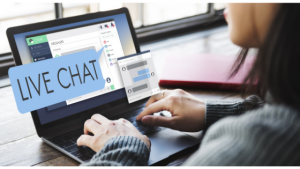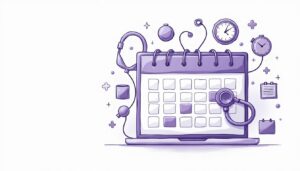Distance Learning: What Can We Learn from COVID-19
06 Apr 2020 By: Michael Kansky
Updated
Just about every school-aged kid I know LOVES a snow day. Heck, I loved them so much when I was a kid I would perform every snow day ritual known to man at the slightest chance of snow. That meant spoons under pillows, pajamas inside out, and when I really wanted a snow day I would add a special snow day dance.
Snow days meant no school, a day of relaxation, or an extra day to finish that homework Mr. Smith assigned that you didn’t do… oops!
But, what would happen if Americans were struck with seemingly never-ending snow days? What would happen if the schools closed and kids were home for an extended amount of time, with no sure end in sight?
While this sounds nowhere near as fun as snow days, the concept of schools closing is the reality most of us are facing. School-aged kids all across America (the world even!) are adjusting to a new way of learning thanks to the mandated quarantine from COVID-19.
Distance learning is the new norm, and no one can say for how long.
What is Distance Learning
Distance learning, or e-learning, is a form of education where students and teachers are interacting through a supported digital portal. While most of the youth in America are just making their initial adjustments to distance learning, the concept has been around for quite some time.
A pioneer in distance learning, the University of Phoenix started normalizing online education in 1976. Now, universities all over the world have options for online classes.
Outside of universities, platforms like Udemy make it easy for anyone to learn a skill. Udemy offers thousands of online certification classes covering a variety of topics and software like Photoshop and Google Adwords.
Distance learning has been around for a while. Online education is not a new concept to most college-age students. The students who are most affected by it are the elementary and highschool-aged children because distance learning is less common among younger age groups.
I was able to connect with a friend who teaches middle school biology. I asked him what his first impression of mandated distance learning was.
In response, he talked about how his classroom is very tech-friendly. Thus, the initial adjustment for him and his students wasn’t too much of a culture shock. However, he did mention how kids his students’ age need a social community to grow.
“My first impressions are that the technology is easy to operate (I knew this all along because I love implementing Tech in my classroom) but also I feel that human connection is so important in middle school and the students aren’t getting that currently.” Chris S. – Montgomery County Middle School Teacher
Pros to Distance Learning
Even though the initial adjustment might be a challenge, there are some significant pros to distance learning.
Save Time and Energy
It may seem insignificant, but rushed or hectic mornings can have a longer effect on school-ages children. Feeling like they have to put more focus on their outfit and their appearance than their schoolwork doesn’t set them up for success. With distance learning, mornings can be calmer, children and adolescents don’t feel as much pressure to look a certain way to avoid bullying.
There is also the factor of sleep. Without worrying about what they’re going to wear, or make for breakfast, or pack for lunch, there’s more time for youth to catch an extra hour of sleep. This can aid in their ability to focus throughout the day and feel more alert during their online class.
Flexibility
The pro of flexibility changes case by case. From what I have heard, many online schooling programs are structured in a way that allows kids to learn at their own pace.
Traditional classroom learning can feel rushed for some kids, but with this shift into distance learning, teachers have gotten very creative with how they are teaching their material. The flexibility offered for kids to review a topic more than once might not have been a reality in a classroom.
It’s also the flexibility of their physical surroundings. 25% of students age 13-18 experience some type of anxiety at school or in the classroom. With distance learning, they can be in an environment they feel safe and calm in, allowing them to focus more on their work.
Shared Learning Experience
This pro might be more in favor of younger students, but it’s a pro nonetheless. Distance learning due to COVID-19 allows students and parents to learn together. This is an experience that children would not have otherwise but holds tremendous value.
My neighbor is a stay at home mom. She has a fifth-grader who is doing distance learning. They’re lesson this past week was about fractions. Her teacher was able to create a wonderful lesson plan where students (with supervision) were instructed to find and make a recipe to learn different fractions. How fun and creative is that! My neighbor and her daughter took the lesson to new heights by making all the neighbors muffins and delivering them in cute corona quarantine suits.

This is just a small example of how distance learning can incorporate a shared bonding experience between children and parents or older siblings who are home due to quarantine.
When a parent or caregiver is involved in a child’s education, the child is less likely to have behavioral problems and more likely to succeed in academic performance (Waterford) . In addition, when parents are engaged in their children’s school lives, students have the home support and knowledge they need to not only finish their assignments but also develop a lifelong love of learning.
Cons of Distance Learning
While the positive factors of distance learning are heartwarming and valid, the negative factors are more in favor of the lasting effects of distance learning.
No Physical Interaction
While the relationship between child and parent is crucial, the relationship between children and educators is also very important. When the physical interaction between teachers and students is missing, then students tend to lose personal interaction with their educators and thereby the mental buildup of students may get hampered (Scholarship Positions).
It’s through the various relationships that children learn about themselves and the world they live in. According to https://raisingchildren.net.au/, a highly accredited Australian parenting resource, high-quality teacher-child relationships are associated with greater gains in academic, social-emotional and executive function outcomes.
Additionally, close teacher relationships are significantly related to positive school adjustment outcomes, such as school liking, behavioral engagement, and vocabulary skills.
Less Motivational
Classroom learning offers group motivation to learn and work together. Distance learning requires a lot of self-motivation and self-accountability, no matter the age of the student. With higher levels of education, feelings of isolation, frustrations with the technology, and time constraints due to other responsibilities have influenced students’ motivation (ResearchGate).
Because of the level of isolation that accompanies distance learning, students lack the interaction with fellow classmates in the course. Educators also not being able to interact with the student directly decreases motivation the students would be receiving in a traditional classroom.
Students traditionally get the opportunity to thrive in an environment that challenges them to perform in a peer group. In distance learning, all these motivational factors are absent. Self-motivation can undoubtedly be more difficult with younger students than high school or college-age students, but the fact remains the same.
Program-Dependant Communication and Understanding
I was able to connect with a number of individuals who are experiencing distance learning first hand. Students and teachers alike all shared the same comment about what they would improve: communication!
As a teacher, I can only imagine how hard it would be to communicate to 15+ students in a classroom, let alone over a conference video! For college students who are more acclimated to huge lecture halls or online classes, 1:1 communications with their professors are already limited. But for younger children who come from smaller classrooms and are used to more attention, this new limited communication is a hurdle.
Teachers have openly expressed their frustration with the limited communication. They’ve cited the need for more support for students like an online live chat tutoring portal with various teachers, teacher’s aides, or retired educators who are willing to dedicate some time to help students during their distance learning. This option would offer students the same support they would get in a classroom, or from after school tutoring.

What Can We Learn About Distance Learning from COVID-19
While distance learning has its pros and cons, it’s a concept that’s here to stay. We can only hope that schools will take this experience and improve their plan of action for the future.
Only 26% of college students have taken an online course. Compare that to the 76 million students of all ages across the United States that are now experiencing distance learning. It is a very small percentage. Many schools were ill-prepared for the COVID-19 quarantine. They lacked resources, software, and teachers had to totally redesign their lesson plans.
We can all hope and pray that something like this won’t happen again for a long time, but whether it’s a global pandemic like COVID-19, or something as small as a snow day, schools need better resources and plans for students and teachers to effectively implement distance learning.


